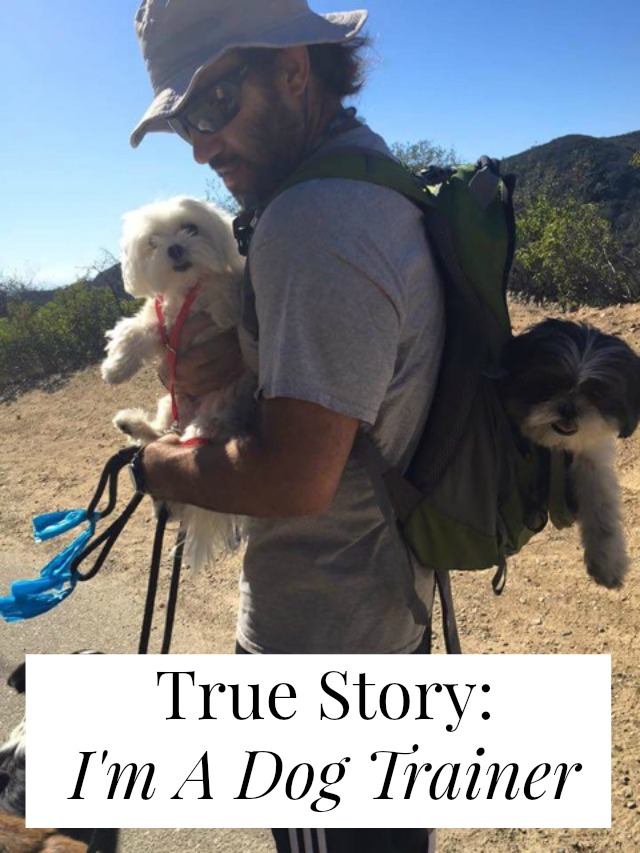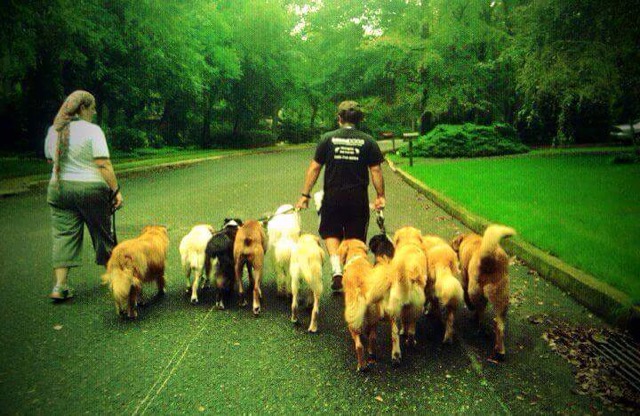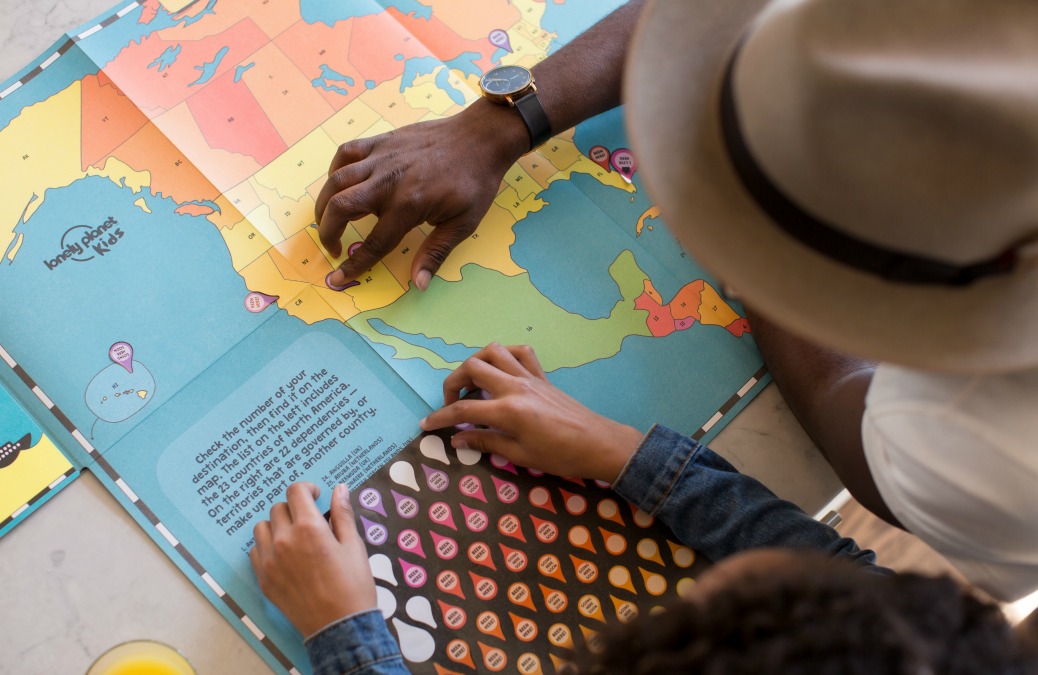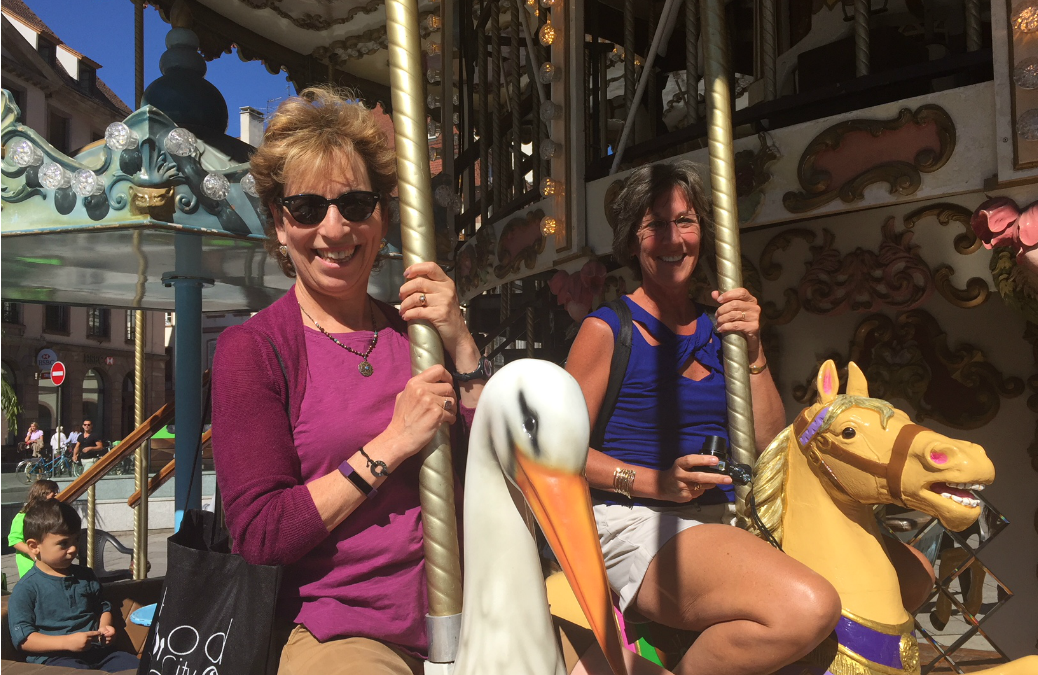 Tell us a bit about yourself!
Tell us a bit about yourself! Hi, Von Bargen nation! I’m Gary Cassera. I’m a 36-year-old entrepreneur and new resident to LA. I live here with my super amazing wife Melissa and our three dogs; Jacob (aka fun police), Kita (aka monkey feet), and Lily (aka little badness). I grew up and lived in NJ for 33 years. I have spent the last three years living in Napa, CA before moving to LA.
I’ve been an entrepreneur for my entire life. At five years old, I started walking dogs in my neighborhood, charging the owners when I got back – much to their surprise!
My wife and I own a few businesses; one of which is a dog walking and pack walking business. We specialize in socializing dogs who can be a little naughty.
For fun we do most things with our dogs. We hike, go for beach adventures, and eat at amazing restaurants wherever we are. Mostly, I work a lot! I find a lot of truth in that famous saying: “Do something you love and you never have to work a day in your life.”
What path lead you to working as a professional dog trainer?
I was a tennis player after college and I was starting to get old and tired. We adopted a Shih Tzu who was totally gregarious and fun loving, then suddenly … wasn’t. I had a friend who hired a behaviorist and she passed the info on to me. After working with the behaviorist – it just clicked. I started doing everything I could to learn more about dogs and started my company
Balanced Dogs soon after.
Let’s say I just got a puppy. When should I start training her? What are your favorite resources? Which commands should I start with?
The first thing question people should ask themselves is “Why did I get this dog?” If you can be self-aware when answering that question, you can head off a lot of potential problems. Fifty percent of my clients could fix their problems if they focus on that answer! Owners make their job harder when they can’t answer that question.
As far as commands, for me, that’s not a first priority. Down the road, it can be fun to show your friends that your dog knows how to sit, but if you’re using those commands to avoid problems like jumping or door bolting, that’s a different issue.
My goal is to help my clients socialize their dogs and show the dog how they should interpret objects and scenarios. If either the dog or client is nervous, I help them through it. If they are too pushy, I show them how they should be.My favorite thing about dogs is if you teach them how to be, you never have to ask them to do anything like sit, down, etc.
Would your suggestions be different for someone who just got an adult rescue?
The first thing I do when I get a dog is imprint them on me. Imprinting is the process by which your dog learns the behaviors of a parent, other dogs, humans or other beings, and gains some of his basic socialization skills. I give them structure structure structure.I show him where he sleeps, where he eats, where he goes to the bathroom, how we walk, etc.
Once the dog starts following me around without the leash and starts to anticipate and be connected to me, then I can start challenging him more. I might introduce him to a new dog, teach him to relax when a biker goes by, show him how to relax around kids, etc.
The best advice I can say about rescuing an older dog is to be honest with the level of project you can handle. It’s okay to say “This is too much dog for me.” Really, it’s the responsible and admiral choice! My clients who have committed to the wrong dog really struggle.
While I’m on the topic – cute is not a reason to bring a dog home. It plays a part, but please don’t make that mistake.

In a best case scenario, how long does it take to teach a dog basic commands?
I don’t focus much on commands right away. I believe commands cause confusion in a dog’s brain biology. Why
we want them to lay down and why
they lay down are two different reasons. We think commands give us control when we are unsure of an outcome or scared of something happening so we say “sit” or “down” – like saying “sit” before they jump on Grandma.
Avoiding a problem not really solving it. Dogs lay when they are tired.What they should be taught is to respect Grandma’s space and not jump on anyone unless they’re invited. That’s why I socialize my dogs so I don’t have to give them commands. I can let them be responsible for their own decisions and they live with the consequences, good or bad. That’s real life.
What are the most common mistakes owners make while trying to train their dog?
Too much freedom and no plan. Be more proactive instead of reactive. Have a good offense.
Dogs love structure and so do we. Imagine driving on a road with no signs or lights. It’d be complete chaos! Would you feel stressed? Hyper alert? That’s what most dogs are living every day.
So, if you are having problems, a little more structure and teaching the dog what is expected, will help your relationship and avoid confusion.
Is there really such a thing as a dog who can’t learn new tricks?
Do dogs have genetic problems? Of course, just like humans. But I have not met a dog I couldn’t help. If a dog has been practicing the behavior like any ingrained habit, he can be a little more challenging to help the dog through it but it can be done.
In your opinion, what’s the best dog for a young family? A retired couple? A single apartment dweller?
I offer a service for people by phone or in person where we go through a series of questions to diagnose what they really want. Everyone’s environment is different.
Do you walk a lot? Do you need a dog that accepts strangers well? Do you live in the country and want a dog that barks like crazy because there is a sense of comfort knowing they are watching the property? Will you have children one day? (Editor’s note: if you’d like Gary’s insight into which type of dog would be best for you, you can email him directly at balanceddogsllc@gmail (dot) com)
In my opinion, most people want a social dog they can take everywhere. Be real about how much physical and mental challenge you can give the dog every day.
I wouldn’t get a guardian breed if I run a home therapy business. Is the dog going to take kindly to new strangers every day? Not naturally or without guidance. So to flip it, I might say if you really want a guardian breed, do you realize that socialization is very important? You must make time with the puppy to have positive interactions with everyone that comes in the house.
If you are a marathon runner, don’t get a greyhound. They walk 10 min and then they are done. So if you hike 12 miles on a weekend and you want to bring your dog it may not be the right fit.
What’s one thing you’ve learned from your work that any of us could apply to our daily lives – even if we don’t own a dog?
Your dog’s behavior is a barometer for your feelings. Are you angry, frustrated, anxious, scared? That’s why your dog acts out. It’s amazing the connection. A fellow trainer has a great line: “Your dog’s behavior will change as soon as yours does. You just have to go first.”
My dogs have taught me about anger that I needed to dive deeper into. They taught me patience and that we all move at our own speed – which has helped me in my marriage.
My dogs are here as much for me as I am there for them.I get emotional all the time thinking about the selflessness they show me every day and the forgiveness they show me for my errors. No judgment, just total forgiveness.All they want is a calm stable environment and they are reminders to me every day to search for that.
Thanks so much, Gary! This was incredibly helpful! Do you guys have any questions for him?
P.S. True story: I trained bunnies for agility competitions + 4 ways to be a boss in work + life















Oh man, this is timely…my husband just emailed me a photo of the hole our new rescue dog scratched in the wall this morning. Gary’s points about structure and broadcasting our moods are spot on. Thanks Sarah!
So glad it was useful, Lizzie!
Hey Lizzie. I’m glad you liked the article. If there is anything I can do to help with your pup let me know. I know what coming home to surprises like that feels like. I’d be glad to listen and give any advice I can. Best of luck. Thanks
Sarah, I love your site, but I don’t love the fact that this is advertising for trainers that are using things like shock collars and prong collars. Here’s a quote from their site:
“I have experience working and training with all tools such as flat collars, slip leads, e-collars, clickers or marker training, prong collars, martingale collars, crates, haltis, food training, etc. and would be honored to help you determine the best tool and to use it effectively.”
Using terms like “dominance” and “pack” are major red flags. Here’s a great article by Sophia Yin on why these ideas are outdated at least and harmful at worst. http://drsophiayin.com/philosophy/dominance
This is just a heads up for you in case you weren’t aware of the controversy surrounding Cesar Milan’s old-school training methods. This article is old, but gives a good overview of the situation: http://www.urbandawgs.com/divided_profession.html
Hey Anne thank for checking out my site. If you would take the time to know me you would learn tools are not the most important part of the human dog relationship that I teach. Rebuilding connection and understanding are my two best tools to regain peace in my clients homes. As far as the Cesar comment I don’t know what that has to do with me. I believe he is his own person so if you have problems with his methods he uses please address that to him and don’t lump me into that group. I pride myself on being open minded and anyone who knows me in the dog world has a lot of respect for me because of that. I appreciate your feedback, and I’m excited to check out the links you posted. Thanks
Great read! I come from a family of dog lovers and we’ve also adopted a few in the last few years as well. 🙂
I have a question for Gary. My parents adopted a German Shepherd a little more than two years ago. When they got her, we knew that she’d been beaten, had puppies (who were then taken away from her), and left tied up outside. She was afraid of everyone when we first got her. She quickly warmed up to both of my parents, but two years later, she is still afraid of everyone else. My sister and I no longer live at home, but we live nearby and visit fairly regularly, but she still runs away if we try to sit with her without our parents, and does the same with our other relatives. My dad does socialize her outside of the house constantly and brings treats with him to help her warm up to other people, but she has a more difficult time inside the house. She is a great dog and very loving toward my parents (and even toward other family members if my parents are present) but if my parents ever went out of town, she wouldn’t trust anyone else enough to take care of her. Any ideas on other ways to help her become a little more confident around new people?
Hey Valerie. I’m sorry to hear your parent’s dog is having a tough time with people in the house. I have a friends dog here right now who has a similar reaction. It’s tough without seeing it of course but two things that I have found really help:
1- Pretend you are the most popular kid in school. Popular kids don’t look, talk, or socialize with most people and they aren’t really trying to… they just do their own thing. If you are able to be the popular kid dogs respond well to being ignored because it takes away the threat and fear that you may try to interact with them before they are ready. A common mistake I see owners make all the time is: when their nervous dog finally smells me they expect me to pet them or tell them “good girl/boy.” That is exactly what a nervous dog doesn’t want… ATTENTION! They are not attention seekers. They want to come out check things out and build confidence slowly (consequence therapy). So pretend to be the cool kid. It may seem cold-hearted at first, I know, but in relationships it’s about what the other partner needs, not what we “think” they may need.
Second, keep the dog on a leash and keep them out with you while you are there. A lot of dogs stay in this pattern of hiding because they can. The friends dog I have here right now likes to go under beds and than try to bite his mom when she tries to get him out. So, while my 3 dogs are all sleeping on the floor instead of letting him go under the bed and hide I have him tethered to a door on a long leash so he has no choice but to stay out and socialize with us. My wife and I and our pups aren’t so bad to hang out with! 🙂 This will not be normal for your parents dog, but he has to deal with it – which is good for them as long as the dog gets to control the interactions which goes back to top lesson, ignore them. By keeping her out with you guys and not letting her go away you are telling her that you want her there and it is safe. You are also letting her know that people aren’t that bad. People aren’t even going to acknowledge her which will makes her feel safe and will make her want to to be curious because deep down all dogs are curious.
Please let me know if any of this helped. If so, I can tell you the next steps to build trust once she is staying and getting curious with people. Best of luck. I so appreciate your question and wanting to help your parents dog. You rock.
Oh my gosh, so helpful Gary! Thanks for weighing in!
Hi Gary! Great article, and some really great food for thought!
A question: my dog barks when the next-door neighbors come in or out of their apartment. They have a male pug, whom my dog has met, and they are the only two dogs on our floor. The apartment next door was empty for about six months, and the barking started when the new family moved in.
My flatcoat loves people and is well socialized (she’s used to being at the stables around horses and many other dogs, and we compete in obedience).
She never barks at mail delivery (we have at least two different services, so it’s not the same person every day). I think she only barks when we’re home, and it’s an assertive (“someone’s here!!”), not angry bark.
She does bark when we get guests and they ring the doorbell.
I’ve been trying to get her to sit down when she starts barking, and she gets a treat if she sits down and is quiet, but after reading your article I’m thinking that this is not the way to go.
Any thoughts?
IEVA. It is always hard to dog train over the internet, but here is a thought. I would not ask the dog to sit and stay in this situation. Long story why but in my opinion it can make your problem worse. If your dog is charging the door or barking at the door I would recommend dropping a heavy book on the ground to cause a disruption in the environment that the dog will pay attention to. I wouldn’t say anything i would just walk up behind them and drop the book on the floor. If you have a sensitive dog to a situation like this what will happen is the dog should move away from the scene of the crime and go do something else like look confused saying what just happened which is better than barking like a goof ball. The important part here is to ignore the dog and let them deal with the consequence that they created by barking and acting like a fool. In therapy this is called consequence therapy. The example I always use is if I had a cell phone and it was hot and you reached out to touch it and i stopped you and said don’t touch it you wouldn’t get burned from it. If there is someone else there and they reach out and touch the phone they will learn that it is hot and never touch it again. Learning from consequences. So I will always have to tell you because you never felt it, but since the other person did touch it I won’t have to tell them ever again not to. Think about how may times you had to touch the stove to realize it was hot. If you feel you have an overly sensitive dog this is not a strategy for you but it sounds like your pup is confident and just needs a little lesson to learn that this behavior is not needed in the home. So just be quiet, say nothing, walk up behind your pup drop the book and walk away. You should see, fairly quickly, your dog choosing to stay on their bed or what they are doing instead of this behavior that does not fit into your lifestyle. Please email me if you have more questions. Again it is so hard to dog train without seeing and understanding the whole picture but something like this can be a miracle if people really have a barking problem. I could easily do a Skype session with you guys if this is something you are into. I can get a good picture of the whole situation. Thanks for commenting. Best of luck.
Hi Gary,
thank you very much for your advice!
I’ve now tried dropping a magazine on the floor, but what I’ve found works best is if I–just like you said, without saying anything–just go and hold her until she calms down. She’s definitely surprised (“Umm, what are you doing?!”), and she doesn’t like being held like that when she’d rather be barking, so I think she’s learning from this consequence. Definitely a lot less barking now :).
Thank you!